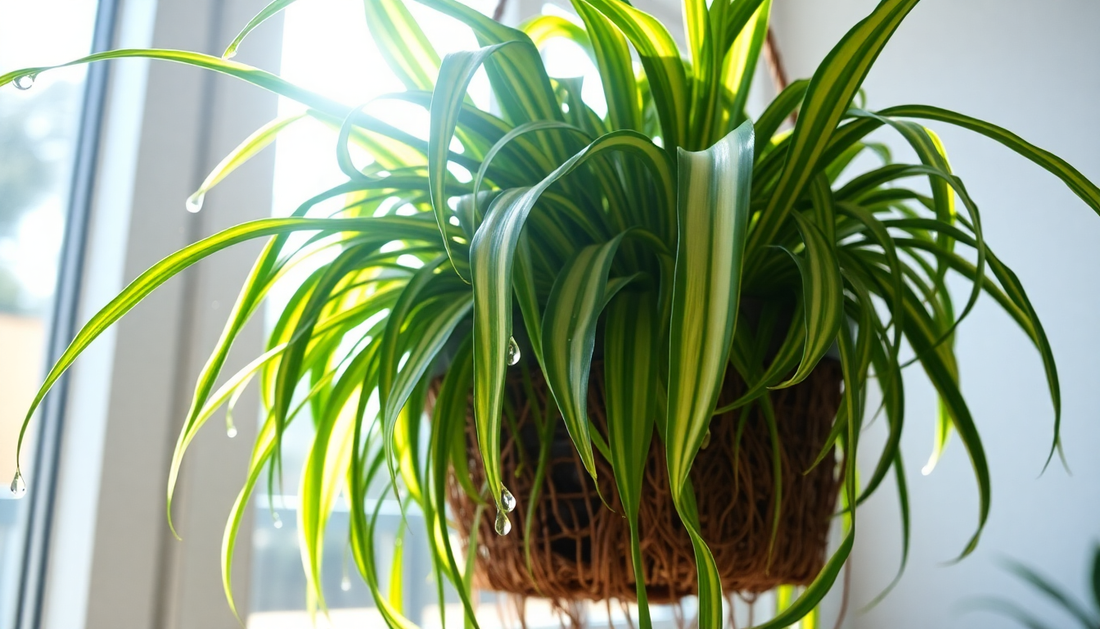
Nutrient and Water Needs for Spider Plant (Chlorophytum comosum): A Complete Care Guide
The Spider Plant (Chlorophytum comosum) is one of the most popular and easy-to-care-for houseplants. Known for its long, arching leaves and ability to produce offshoots or "spiderettes," this plant is both beautiful and low-maintenance. However, to ensure that your Spider Plant thrives and remains lush, understanding its specific water and nutrient needs is crucial. In this guide, we’ll explore how to provide optimal care for your Spider Plant through proper watering and fertilization.
Watering Needs for Spider Plants
Spider Plants prefer moderate watering and slightly moist soil. They are drought-tolerant and can handle occasional neglect, but maintaining the right watering schedule will help your plant flourish.
1. How Often to Water
Watering frequency depends on factors like temperature, humidity, and the plant’s environment. Here are some general guidelines:
- Spring and Summer (Growing Season): Water once a week or when the top 1–2 inches of soil feel dry.
- Fall and Winter (Dormant Season): Reduce watering to every 2–3 weeks, allowing the soil to dry out more between waterings.
2. Signs of Overwatering and Underwatering
It’s important to strike the right balance. Here’s how to recognize if you’re overwatering or underwatering:
- Overwatering: Yellowing leaves, mushy roots, and a wilted appearance are signs of waterlogged soil. Overwatering can lead to root rot, a serious condition that may kill the plant.
- Underwatering: Dry, brown leaf tips and wilting are signs of underwatering. While Spider Plants can tolerate dry conditions for short periods, prolonged dryness will damage the plant.
3. Type of Water
Spider Plants are sensitive to water quality. Tap water with high levels of chlorine, fluoride, and salts can cause brown tips on the leaves.
- Best Option: Use distilled or rainwater for your Spider Plant.
- Alternative: Allow tap water to sit out for 24 hours to let chlorine dissipate before using it.
Nutrient Needs for Spider Plants
While Spider Plants are not heavy feeders, providing them with proper nutrition will encourage healthy growth and vibrant foliage. Here’s what you need to know about fertilizing your Spider Plant.
1. Essential Macronutrients
Spider Plants require the following macronutrients for healthy growth:
- Nitrogen (N): Promotes lush, green leaf growth. A nitrogen deficiency may result in pale or yellowing leaves.
- Phosphorus (P): Supports root development and overall plant strength. Phosphorus is particularly important for young or newly repotted plants.
- Potassium (K): Helps regulate water movement and enhances the plant’s resistance to stress and disease.
2. Micronutrients
In addition to macronutrients, Spider Plants need trace amounts of micronutrients like calcium, magnesium, and iron for optimal health. These nutrients support photosynthesis, enzyme activity, and cell development.
3. Fertilizer Recommendations
- Use a Balanced Fertilizer: A liquid houseplant fertilizer with an equal ratio, such as 10-10-10 or 20-20-20, works well for Spider Plants.
- Fertilize During the Growing Season: Apply fertilizer every 4–6 weeks in spring and summer.
- Avoid Overfertilizing: Excess fertilizer can lead to salt buildup in the soil, causing leaf tip burn. Always dilute the fertilizer to half the recommended strength.
4. Organic Fertilizer Options
If you prefer an organic approach, here are some alternatives:
- Compost Tea: Provides a gentle boost of nutrients and improves soil health.
- Worm Castings: A natural, slow-release fertilizer that enhances plant growth and improves soil structure.
- Seaweed Extract: Rich in trace minerals and great for promoting overall plant vigor.
Humidity and Environmental Conditions
Spider Plants are quite adaptable but prefer moderate humidity and warm temperatures. While they can tolerate standard indoor conditions, mimicking their natural environment will help them thrive.
1. Humidity Requirements
- Spider Plants prefer humidity levels of 40–60%.
- If your home is dry, especially in winter, use a humidifier or place the plant on a pebble tray filled with water to increase local humidity.
2. Temperature Preferences
- Spider Plants thrive in temperatures between 65–75°F (18–24°C).
- Avoid exposing the plant to cold drafts or temperatures below 50°F (10°C), which can cause damage.
Common Problems and Solutions
Even with proper care, Spider Plants may encounter problems. Here are some common issues related to water and nutrients, along with solutions:
1. Brown Leaf Tips
This is the most common issue with Spider Plants. It is usually caused by tap water with high fluoride or salt content, or by overfertilization.
- Solution: Switch to distilled or rainwater, and flush the soil with clean water occasionally to remove excess salts.
